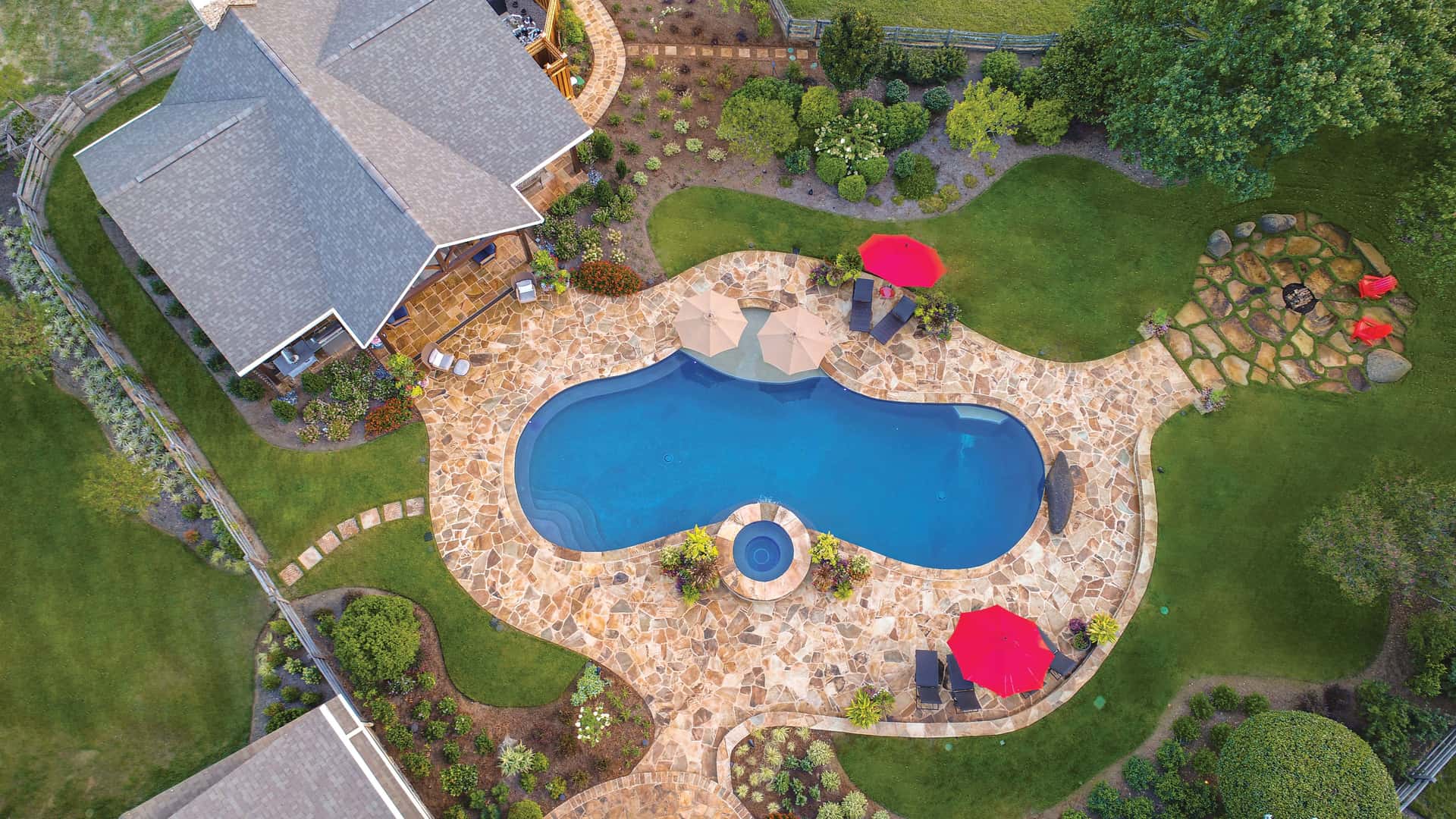Pool Party
By Mike Zawacki
Pool projects require a team of collaborative contractors.
Learn how to get into this profitable business at Equip Expo 2022.
To meet the residential homeowner demand for landscape projects that transform backyards into next-level living experiences with aquatic features as their centerpieces, ambitious contractors are adding pools, spas, and aquatic features to their design/build and hardscaping portfolios.
However, experienced pool industry experts warn contractors entering this market are often missing a key element that not only contributes to a project’s successful completion, but also increases client short- and long-term satisfaction: collaborative teambuilding.
Most experts agree one single company should not manage the complexities involved in a pool or aquatics project from concept through to completion.
While there are exceptions, most landscape contractors lack the necessary skill sets or the experience to manage the complexities of a pool project from the design phase on through construction by themselves, says Skip Phillips, Master CBP, owner and principal designer at Skip Phillips, which designs and builds custom swimming pools, spas, and other aquatic architecture. A successful project, he says, draws from the design and artistic intellect of the architects and applies that to the contractor’s mechanical and construction knowledge to execute the project’s overall vision for the client. Therefore, teambuilding is essential.
“There are only three parts to a pool. There’s the design, which is proportion and scale, but it is also material selection and how you organize the space,” says Phillips, who is also co-founder of GENESIS, part of the Pool and Hot Tub Alliance, which provides comprehensive technical education and certification. “There’s the structural, which is based on the soil conditions and support or lack thereof. And then there’s the mechanical, or how you organize your systems, your filtration, your returns, your skimmers, sanitation, heating, and lighting. If there’s a failure in any one of those three, then the project fails.
“If I have a (pool) that looks good, but it has an amateurish design that fails, then that is not a success in my book,” he adds. “If we don’t have all three working together, then the project will be a failure. Somehow, this needs to be reconciled.”
Jason Brownlee, ASLA, Master CBP, owner of J. Brownlee Design, a firm specializing in custom and creative outdoor residential and resort projects, suggests a three-sided approach that involves the contractor, the homeowner, and the designer all working in tandem toward the same goal.
“These projects are not simple—they’re very complex,” Brownlee says. “Most of these projects last about a year through the construction process, so there are a lot of moving facets. There’s exterior design, the water-shape development, the hardscape and the outdoor living and landscaping elements. All of those involve completely different disciplines and the individuals who specialize in them.
“If one company tries to do it all, then the axiom of ‘jack of all trades, master of none’ comes into play,” he adds. “But if there’s a common goal and everyone executes their roles to perfection, then you’re looking at bringing everyone’s best to the project and that’s key.”
So, how do you best build a collaborative team approach that takes advantage of everyone’s core strengths? Designer, architect, and LEED AP Paul John Boulifard suggests establishing the design architect as the project lead, because their role orbits so many various aspects of the project and they maintain the closest contact with the client.
The various team members, Boulifard explains, see their roles as linear—they come into the project, do their work, and then leave. However, this type of project is rarely ever linear in execution going from Point A to Point B, but rather from Point A to Point K then back to Point B, he says. An effective project leader communicates back and forth between the various team members and the client and keeps everyone on the same page. They also prohibit any one member from going off on their own and into hero mode, potentially derailing a project.
“The key is open communication and collaboration,” he says. “For example, lots of times access to materials and timelines is critical … and a substitution may be called for. It’s good to at least have a conversation about the proposed change and how it impacts the initial design, because changes aren’t always apples-to-apples.”
Therefore, it’s essential to choose team members who understand their roles within the project. “Everyone must manage expectations and check their egos at the door,” Boulifard says. “Everyone has his or her passion that they bring to the project—which is essential—but they need to respect what others bring to the table, as well.
“You want to work with people who will make the process go smoothly, and that starts with everyone agreeing to the processes and procedures that will be used—who does what, when will you do it, and what standards will be followed,” he adds. “Hiccups will happen, so the question is, how will you get beyond the problems as a team? Ideally, you want to address, collaborate, and then move on. Always remember, you want to bring clients solutions, never problems.”
Mike Zawacki is a Cleveland-based writer who has spent 20 years reporting on the landscaping and outdoor power equipment industries.
Subscribe to equip Magazine
To receive a digital version of equip magazine, please provide your email address.
